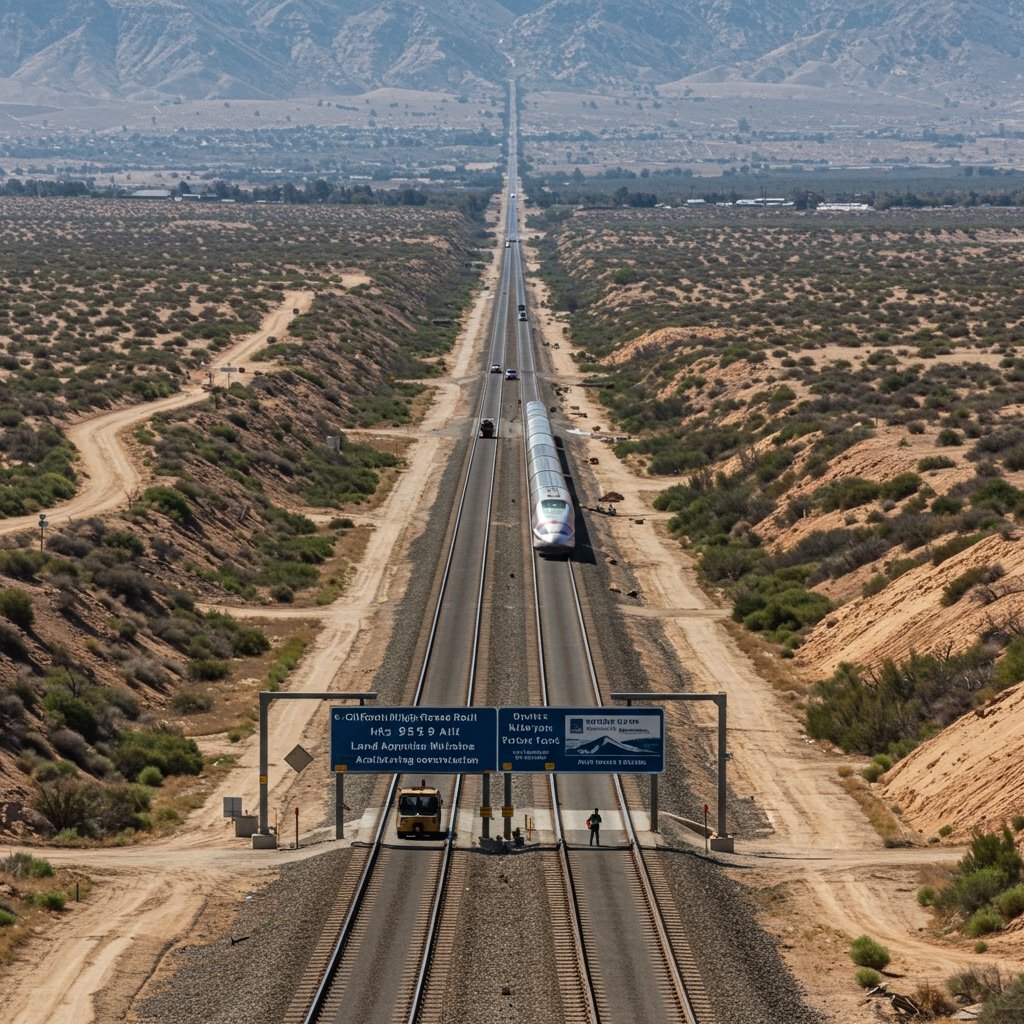California High-Speed Rail Reaches Critical Land Acquisition Benchmark in Central Valley
SACRAMENTO, CA – The California High-Speed Rail Authority (CHSRA) announced on February 24, 2025, a significant and tangible advancement in the development of the state’s ambitious high-speed rail project, specifically within its foundational Central Valley operating segment. The Authority reported successfully securing ownership or control of 95% of the land parcels deemed necessary for the completion of the crucial 119-mile stretch running between Madera and Kern County. This milestone represents a major logistical and legal hurdle cleared, directly impacting the pace and efficiency of ongoing and future construction activities.
Details of the Milestone Acquisition
The reported 95% acquisition rate pertains to approximately 3,200 properties situated across the four counties encompassed by the Madera to Kern County segment – Madera, Fresno, Kings, and Kern. Securing control of these parcels, through a combination of negotiated purchases and, where necessary, eminent domain proceedings, is a prerequisite for laying track, building viaducts, constructing bridges, and establishing necessary infrastructure like stations and maintenance facilities. The sheer number of individual properties involved underscores the complexity of the undertaking, requiring extensive negotiations, legal processing, environmental reviews, and relocation assistance.
Officials with the Authority highlighted that this benchmark is not merely a statistical achievement but a critical enabler for expediting physical construction progress along the backbone of the initial operating segment. With the vast majority of required land now under the Authority’s control, contractors can proceed with greater certainty and continuity across the alignment. This reduces potential delays caused by property disputes or access issues, which can significantly impact large-scale infrastructure projects.
Impact on Construction and Project Timeline
The 119-mile segment from Madera to Kern County is the initial phase of the California High-Speed Rail system slated for operation. Significant construction has been underway in the Central Valley for several years, focusing on grading, structure building (including numerous overpasses and viaducts), and preparing the corridor for track installation. Reaching the 95% land acquisition mark directly facilitates the consolidation of construction zones and allows for more extensive, contiguous work fronts. This integration of cleared land parcels into active construction areas is expected to accelerate the build-out of foundational elements required for the rail line.
For instance, key infrastructure points such as major viaducts crossing existing transportation corridors or environmentally sensitive areas often require control of adjacent land for staging, equipment access, and right-of-way. The near-completion of land acquisition removes a significant obstacle to completing these complex structures. Similarly, preparing the path for track bed installation and eventual track laying becomes substantially more straightforward once the necessary land corridor is fully assembled.
Addressing Remaining Challenges
While the 95% figure represents substantial progress, Authority officials acknowledged the existence of remaining land acquisition challenges. These remaining 5% of parcels are often located in more complex scenarios, particularly within or adjacent to urban centers. Acquisitions in densely populated areas frequently involve intricate negotiations with multiple property owners, businesses, or require navigating complex zoning and relocation issues. These can be time-consuming and may necessitate the formal exercise of eminent domain, a process that involves legal proceedings to ensure fair compensation and adherence to statutory requirements.
The Authority stated its commitment to diligently pursuing the acquisition of these final properties. Efforts include continued good-faith negotiations, working closely with affected property owners to reach amicable agreements, and providing robust relocation assistance in accordance with federal and state guidelines. The goal remains to resolve these outstanding issues as efficiently and equitably as possible to clear the entire 119-mile corridor for full construction activities.
Commitment to Early Operations
In conjunction with the land acquisition update, officials reiterated the Authority’s firm commitment to commencing passenger operations on the Central Valley operating segment in the early 2030s. Achieving the 95% land control milestone is viewed as indispensable to meeting this timeline. The ability to accelerate construction across the core segment directly contributes to the project’s critical path toward operational readiness. The Madera to Kern County line is intended to serve as the backbone and a proof-of-concept segment for the larger statewide system, which is planned to eventually connect San Francisco to the Los Angeles Basin.
The progress in land acquisition follows years of planning, environmental review, and initial construction activities. The project has faced significant funding, political, and logistical hurdles since its inception. However, milestones like the one announced on February 24, 2025, demonstrate tangible forward momentum in the physical construction of the line.
Ensuring timely land acquisition is paramount for maintaining project schedules and controlling costs. Delays in securing necessary parcels can lead to construction stoppages, inefficient use of resources, and potential cost escalations. By reaching the 95% threshold, the Authority has significantly mitigated this risk for the majority of the initial operating segment.
Looking Ahead
The focus now shifts to integrating the newly controlled parcels into active construction sites and intensifying efforts on the remaining 5% of acquisitions, particularly in the more complex urban environments. The Authority continues to coordinate with its construction contractors to optimize work schedules based on land availability and construction readiness. The progress in the Central Valley is seen as foundational for the ultimate vision of high-speed rail in California, providing a testbed for technology, operations, and stakeholder coordination as the project progresses towards connecting the state’s major metropolitan areas. The successful securing of 3,200 properties along the 119-mile path between Madera and Kern County marks a pivotal moment, bringing the prospect of high-speed rail operations in the early 2030s closer to reality.



















